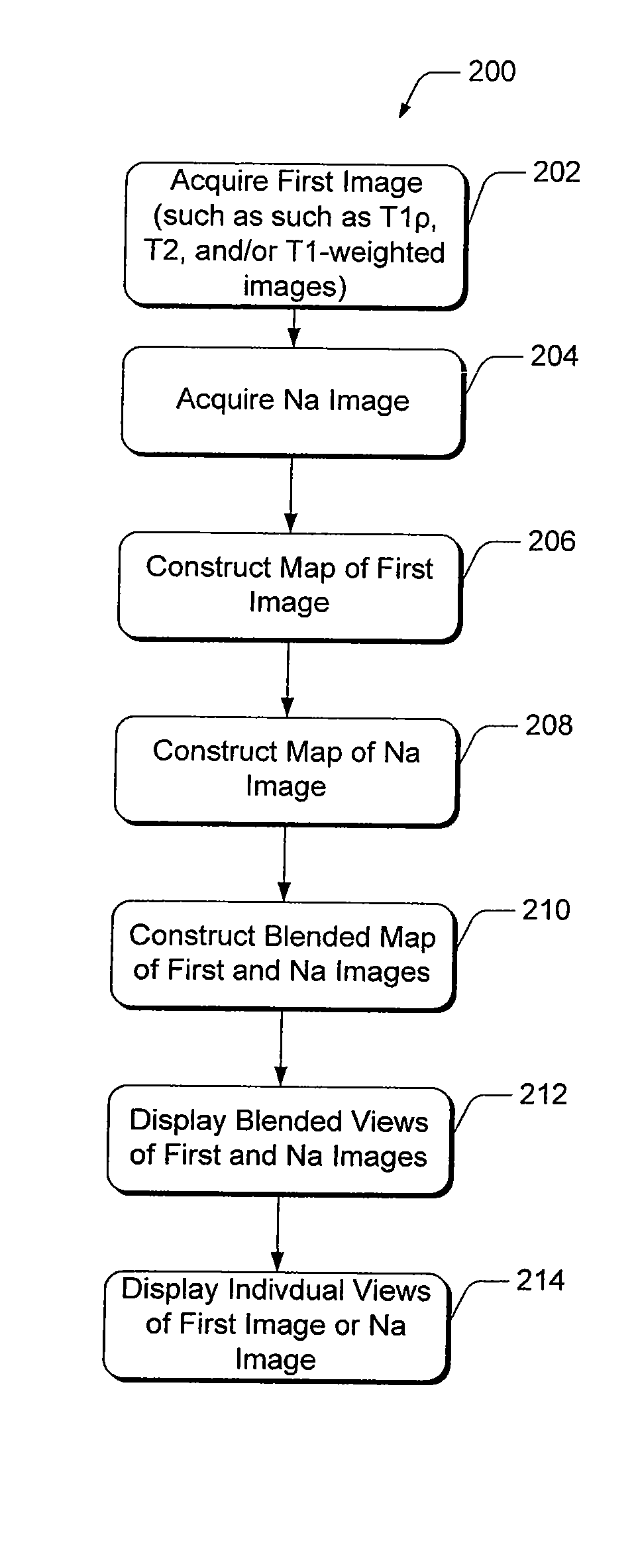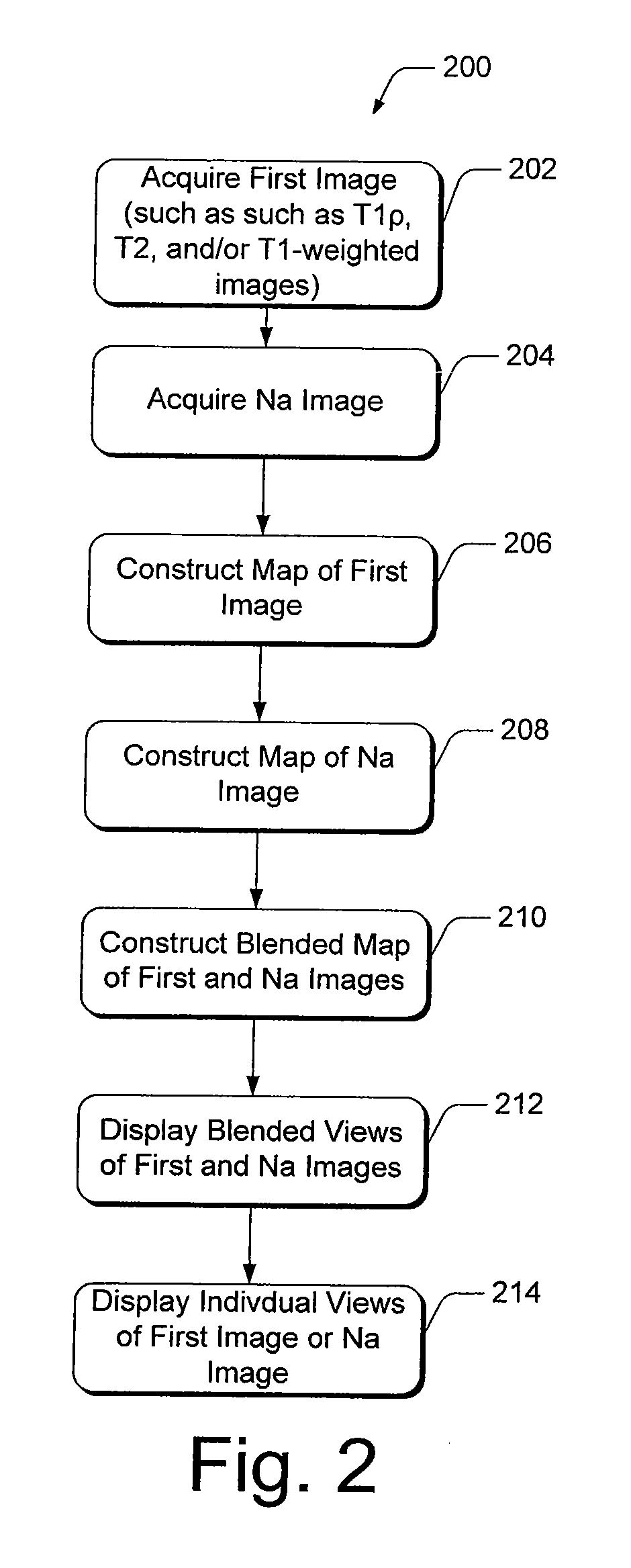Magnetic Resonance Imaging For Diagnostic Mapping Of Tissues
a tissue and magnetic resonance imaging technology, applied in the field of magnetic resonance imaging, can solve the problems of ineffective halting of oa progression, pain and discomfort of subjects, and no longer serving as effective load-bearing materials, so as to improve the diagnostic accuracy, and ensure the
- Summary
- Abstract
- Description
- Claims
- Application Information
AI Technical Summary
Benefits of technology
Problems solved by technology
Method used
Image
Examples
Embodiment Construction
[0027]Magnetic Resonance Imaging (MRI) is an imaging technique based in part on the absorption and emission of energy in the radio frequency range. To obtain the necessary magnetic resonance (MR) images, a patient (or other target) is placed in a magnetic resonance scanner. The scanner provides a magnetic field that causes target atoms to align with the magnetic field. The scanner also includes coils that apply a transverse magnetic field. Radio-frequency (RF) pulses are emitted by the coils, causing the target atoms to absorb energy. In response to the RF pulses, photons are emitted by the target atoms and detected as signals in receiver coils.
[0028]Present diagnostic strategies, such as CT, and T1- and T2-weighted magnetic resonance imaging, are only sensitive in advanced stages of the disease. Described herein is an innovative MR package that provides complete information about the biochemical and morphological state of the tissue. The MR package includes a process of pre-imaging...
PUM
 Login to View More
Login to View More Abstract
Description
Claims
Application Information
 Login to View More
Login to View More - R&D
- Intellectual Property
- Life Sciences
- Materials
- Tech Scout
- Unparalleled Data Quality
- Higher Quality Content
- 60% Fewer Hallucinations
Browse by: Latest US Patents, China's latest patents, Technical Efficacy Thesaurus, Application Domain, Technology Topic, Popular Technical Reports.
© 2025 PatSnap. All rights reserved.Legal|Privacy policy|Modern Slavery Act Transparency Statement|Sitemap|About US| Contact US: help@patsnap.com



